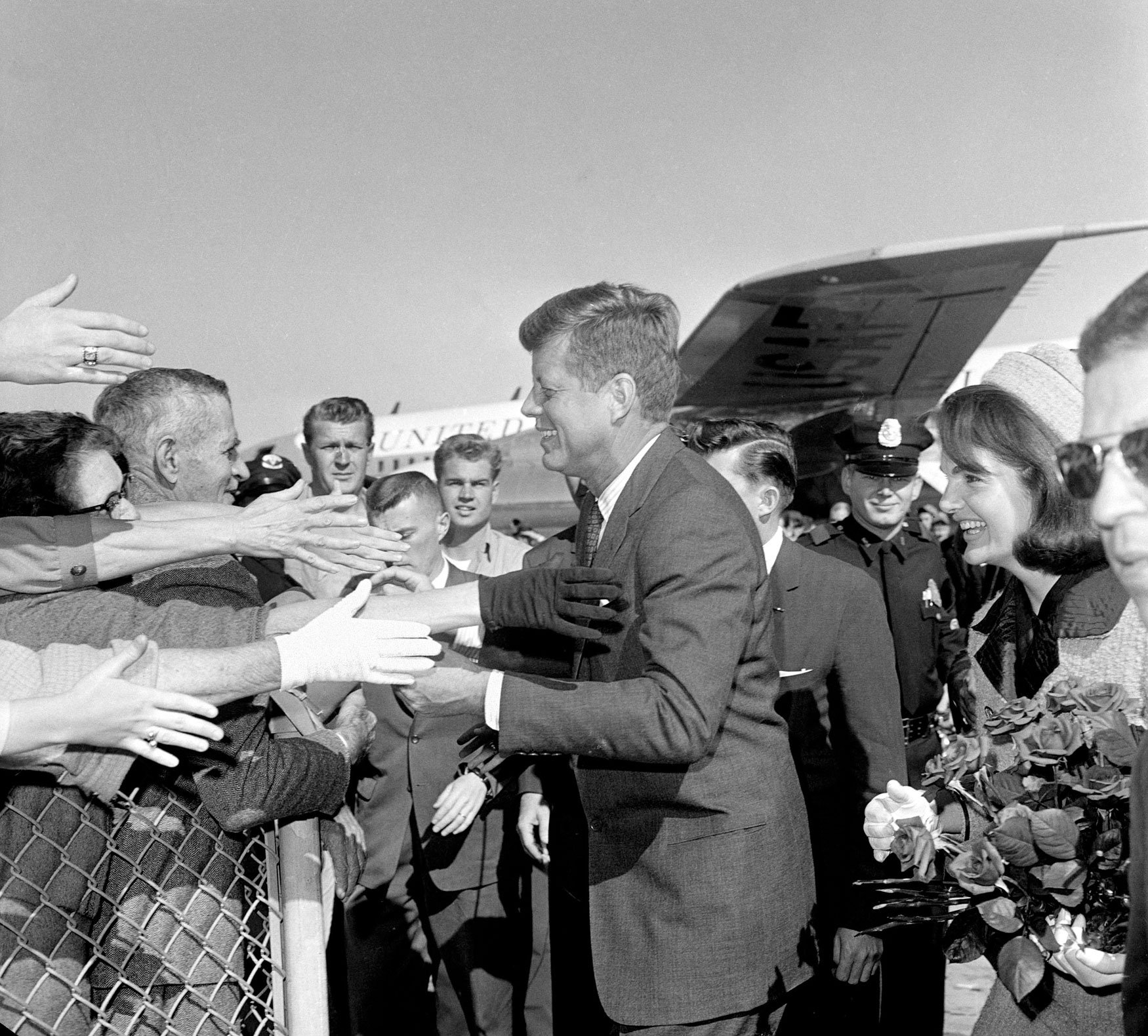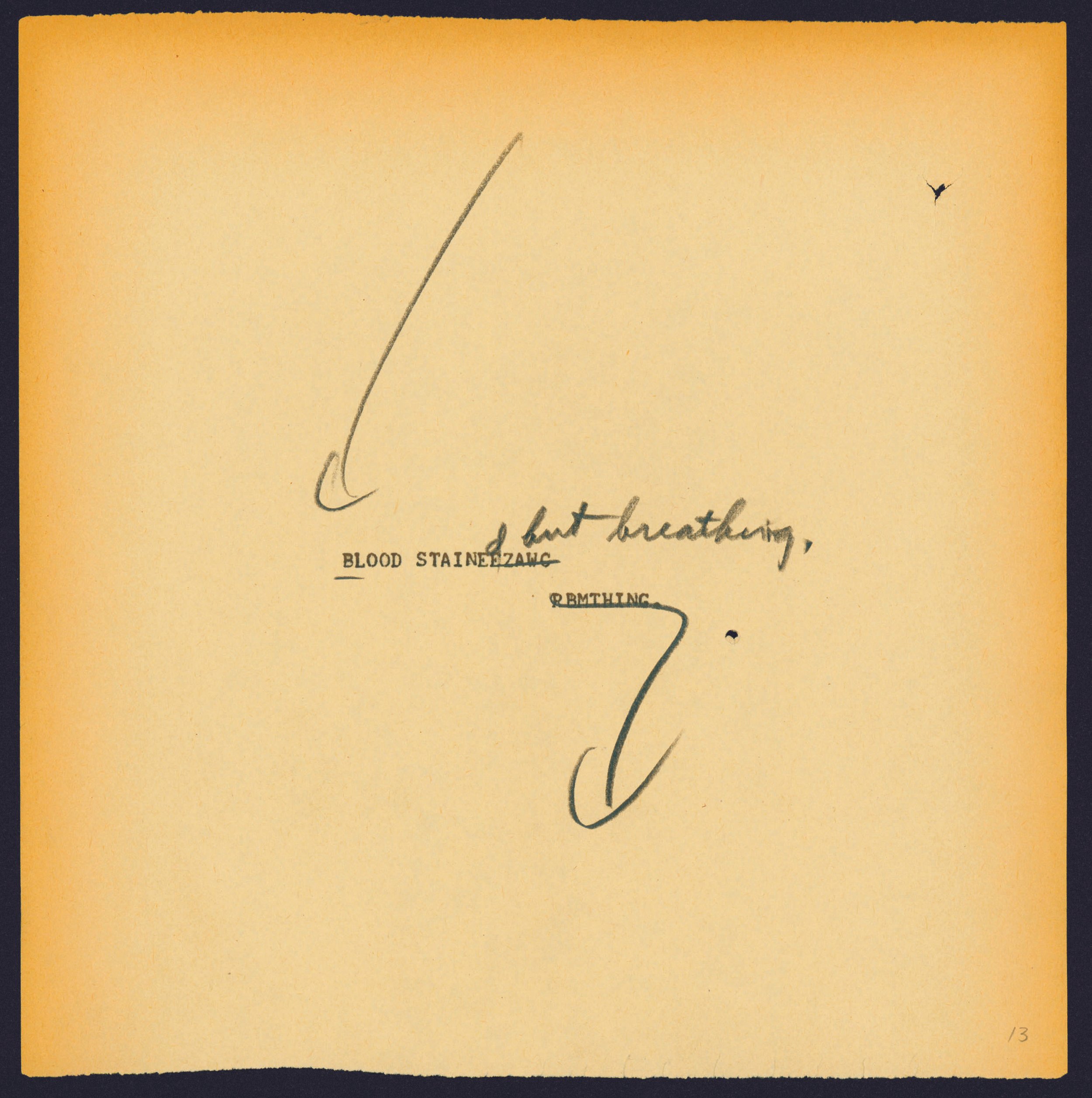How AP covered the assassination of President John F. Kennedy, Nov. 22, 1963

I grabbed that phone when it rang and Ike said, “Bob, the president has been shot!”
I said, “Ike, how do you know?”
He said, “I was shooting pictures then and I saw it.”
I said, “Ike, you saw that?”
He said, “Yes, there was blood on his face. Mrs. Kennedy jumped up and grabbed him. She cried, ‘Oh, no!’ And the motorcade raced on.”
And I said, “Ike, what else did you see?”
And then he said, “I heard shots,” and went on with more detail. So I wrote the bulletin and it was not—it was just reciting what Ike had told me.
— Bob Johnson, Dallas Chief of Bureau, 1963-69
From an oral history interview, March 25, 2005
November 22, 2023 marks the 60th anniversary of President John F. Kennedy’s assassination while visiting Texas with his wife Jacqueline.
President John F. Kennedy and Jacqueline Kennedy arrive to a warm reception at Dallas' Love Field on Friday morning, Nov. 22, 1963. (AP Photo/Henry Burroughs)
At 11:50 a.m., the presidential motorcade leaves Love Field for downtown Dallas. The President and Mrs. Kennedy ride in the back seat of the 1961 Lincoln convertible; Mrs. Kennedy is always identifiable by her pink pillbox hat. Texas Gov. John Connally and Nellie Connally sit in the middle jump seat. The car is driven by Special Agent William R. Greer. The national press pool car, the sixth car, carried AP Washington staffer Jack Bell, UPI staffer Merriman Smith, assistant White House press secretary Malcolm Kilduff, Robert Baskin of the Dallas Morning News, and Bob Clark of ABC News. (AP Photo)
President John F. Kennedy waves to the crowd approximately one minute before he is shot, just before 12.30 p.m. in Dallas on Nov. 22, 1963. This is the last professional picture made of the president while he was still alive and the first of three taken by AP Dallas Wirephoto operator James W. “Ike” Altgens, who would phone in the news of the assassination he was about to witness. (AP Photo/James W. “Ike” Altgens)
This photograph captures the moment the first shot hits the president. Seen through the limousine’s windshield, the president appears to raise his hand toward his head. Mrs. Kennedy’s gloved left hand reaches out to hold him. The two secret service agents riding the right running board of the second car turn in the direction of the gunfire. (AP Photo/James W. “Ike” Altgens)
President John F. Kennedy slumps against his wife as the second bullet from an assassin's rifle strikes him in the head. This photograph is referred to as “the Moorman Polaroid." (AP Photo/Mary Ann Moorman)
Special Agent Clinton J. Hill jumps onto the rear of the presidential limousine as it speeds to Parkland Hospital, moments after the second and fatal shot wounds the president. Hill was trying to prevent Mrs. Kennedy from jumping onto the back of the car. After taking this picture, James W. “Ike” Altgens phoned his eye-witness account to the Dallas bureau; his picture moved on the wire at 12:57 p.m., 17 minutes after the first bulletin. (AP Photo/James W. “Ike” Altgens)
Special Agent Clinton J. Hill stands with one foot in the back seat of the car, as Mrs. Kennedy huddles over her husband’s body. This photo did not come to light until a week after it was taken. (AP Photo/Justin Newman)
“A” Wire Copy Edited for the TTS (Teletypesetter) Circuit
22 November 1963
12:40 to 12:57 p.m. Central Time
The first bulletin announcing President Kennedy had been shot moved on the “A” or national wire at 12:40 p.m. Central Standard Time (“12:40 pcs” in wirespeak). It was reported by Dallas Bureau Chief Robert Johnson, cradling the telephone as he listened to James W. “Ike” Altgens at the scene.
The President had been shot in Dallas just before 12:30 p.m. His limousine arrived at Parkland Hospital five minutes later, and the president was pronounced dead at 1:00 p.m. News of his death, conveyed in a Flash, was delayed until 1:32 p.m. to allow Vice President Lyndon Johnson to leave the hospital for Love Field, where he would be sworn in aboard Air Force One.
On view here are select sheets of copy taken off an incoming printer at New York's general desk and hand-edited for transmission over the AP's Teletypesetter (TTS) circuit, which delivered formatted text to hundreds of smaller newspapers. The sheets, from the AP Corporate Archives, cover the period from 12:40 to 12:57 p.m. CST (1:40 to 1:57 p.m. EST).
Working quickly, editors marked the all-caps text to indicate the need for capitalization, added paragraph markings, and edited the copy. Note that the editor must also supply words that separated, with single letters cascading down the right margin, a result of pulling the paper out of the teletype while it was still printing. Seen individually, their graphic intensity mirrors the tragic events they relay.
The Dallas bureau of the Associated Press is shown on the night of Nov. 22, 1963. Bureau Chief Bob Johnson, center, who wrote the first bulletin that the President had been shot after taking Ike Altgens phone call, looks over the shoulder of Texas Bureau Assistant Jim Mangan, right, who manned the “A” national news wire continually for 13 hours. The bespectacled man at Johnson’s left is Texas State Editor Bob Ford, who telephoned from Parkland Hospital the first report that Kennedy was dead. Under the clock at left is Dallas Operator Clayton Dorris. At right background is Operator Joe Bortnick, who had been rushed down from Kansas City. (AP Photo)
Former Dallas Bureau Chief Bob Johnson, center, studies an exhibit commemorating the 45th anniversary of the Kennedy assassination, Nov. 18, 2008, at AP headquarters in New York City, with his children, Kate and Miles. (AP Photo/Chuck Zoeller)
Text and photo curation by Valerie Komor

















